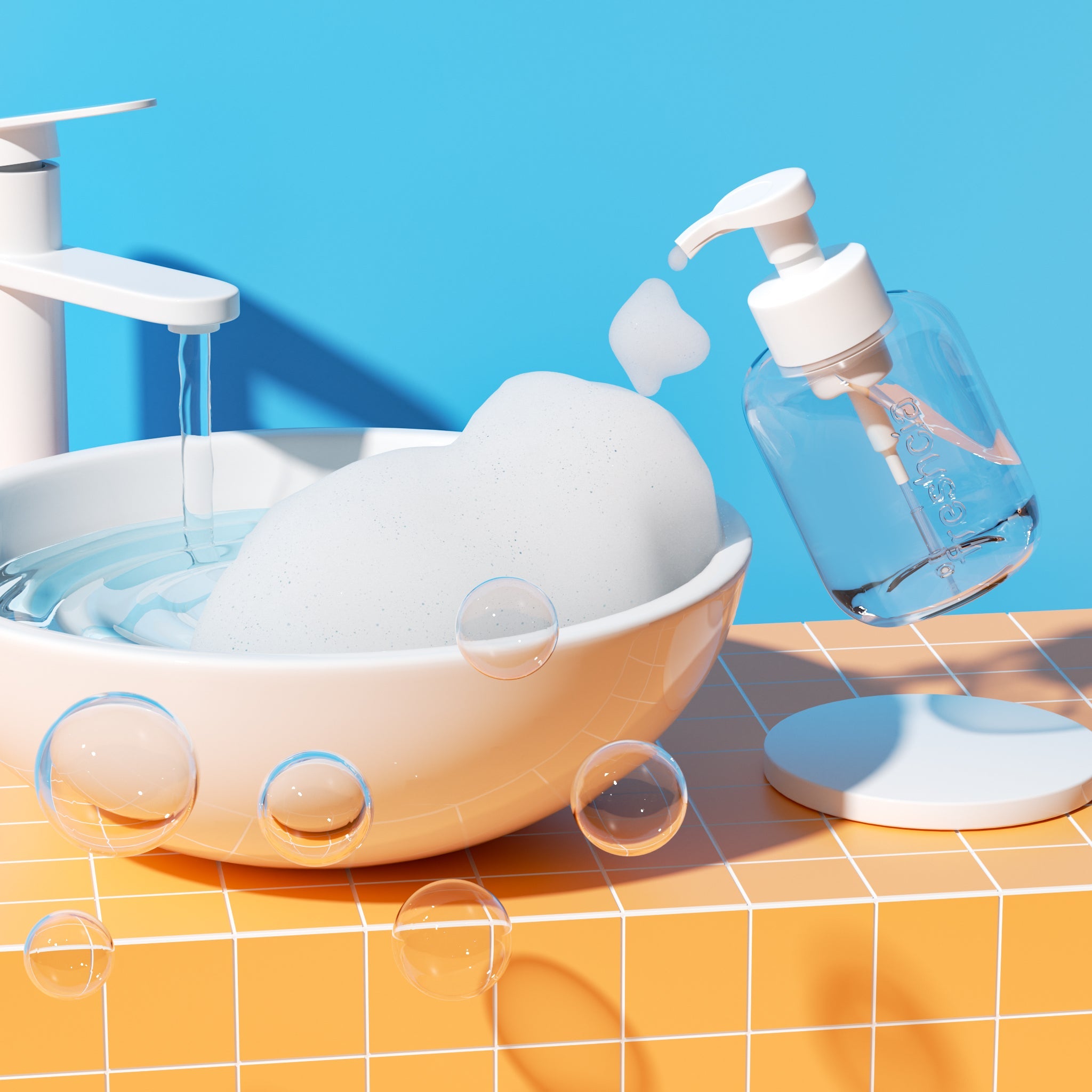
The Psychology of Foam: Why Foaming Soap Feels Cleaner (and More Fun)
Foam isn’t just fluff — it’s feelings. Ever noticed how a rich, frothy lather instantly makes handwashing more satisfying? That’s not just good design; it’s science.
While hand sanitisers, gel and foaming hand soaps get the job done when it comes to hygiene, research shows that the experience of handwashing can shape our behavior, influence how often we wash, and even affect how clean we feel afterward.
Perceived Luxury and Positive Reinforcement
The voluminous and airy nature of foam provides immediate visual feedback, reinforcing the sense that hands are being effectively cleaned (Hong Kong Science Museum, 2020). This visual cue, combined with the satisfying tactile sensation, contributes to a more enjoyable handwashing experience, which can increase the likelihood of consistent handwashing behaviour (Powell, 2019). Psychologically, the foam is associated with luxury and indulgence, making users more likely to perceive the process as self-care rather than a chore (Powell, 2019).
Behavioural Science and Sensory Engagement
Sensory cues such as texture, sight, and scent are fundamental to product engagement and user satisfaction (Andrei, 2025). Foaming soap, by offering these multisensory stimuli, enhances emotional involvement and reinforces habits over time (Andrei, 2025). The pleasure derived from the lathering process can turn routine hygiene into a gratifying ritual, increasing compliance, especially among children and reluctant users (Hong Kong Science Museum, 2020).
Efficiency, Dilution, and Environmental Considerations
Foaming soap is generally created by mixing a diluted liquid soap with air through a specialised dispenser, often using less product per wash while delivering a satisfying lather (Powell, 2019). Despite its lower concentration, the abundance of foam often gives the impression of thorough cleansing, which can encourage more deliberate handwashing (Hong Kong Science Museum, 2020). Additionally, foaming soaps typically require less water for rinsing, making them a more sustainable option in terms of water and energy usage (Powell, 2019).
Contrasting Gel Soaps and Their Use Cases
In contrast, gel-based hand soaps—particularly those with high alcohol content—are frequently perceived as more powerful in germ elimination (UCI Health, 2020). This perception may lead users to choose gels in healthcare or high-risk environments, where sterility and disinfection are prioritised (UCI Health, 2020). However, the thicker formulation of gel soaps can result in overuse and longer rinse times, which may reduce overall efficiency and increase water consumption (Powell, 2019).
Potential Drawbacks of Gel-Based Formats
While effective, gel soaps are more likely to cause skin dryness with repeated use, especially if they contain high concentrations of alcohol or strong surfactants (UCI Health, 2020). Moreover, the absence of the visual and tactile satisfaction found in foam can make gel soaps less appealing for regular use, particularly in home and personal care settings (Andrei, 2025).
Freshcia’s Foam Innovation
Freshcia’s Foaming Hand Wash Starter Kit takes this sensory science to the next level by incorporating a built-in mesh filter within the dispenser, which optimises the water-to-soap ratio when dissolving our tablet-based refills (Hong Kong Science Museum, 2020). This results in foam that is richer, more stable, and noticeably more voluminous than typical market offerings (Powell, 2019). The enhanced sensory quality is designed to increase user enjoyment, reinforce hand hygiene habits, and deliver a superior cleansing experience (Andrei, 2025).
Conclusion
In summary, both foaming and gel-based hand soaps serve critical functions in hand hygiene. However, foaming soap offers unique psychological and behavioural advantages due to its visual appeal, multisensory engagement, and potential for habit reinforcement (Powell, 2019; Hong Kong Science Museum, 2020; Andrei, 2025). While gel soaps may be preferred in clinical or germ-conscious settings for their perceived strength (UCI Health, 2020), foam is more likely to be embraced in everyday routines where user experience and sustainability matter most. With innovations like Freshcia’s microfiltered foam system, the simple act of washing hands becomes both effective and delightfully uplifting.
Sources
https://hk.science.museum/en/web/scm/online-explore/cb/tsodf.html
Share










